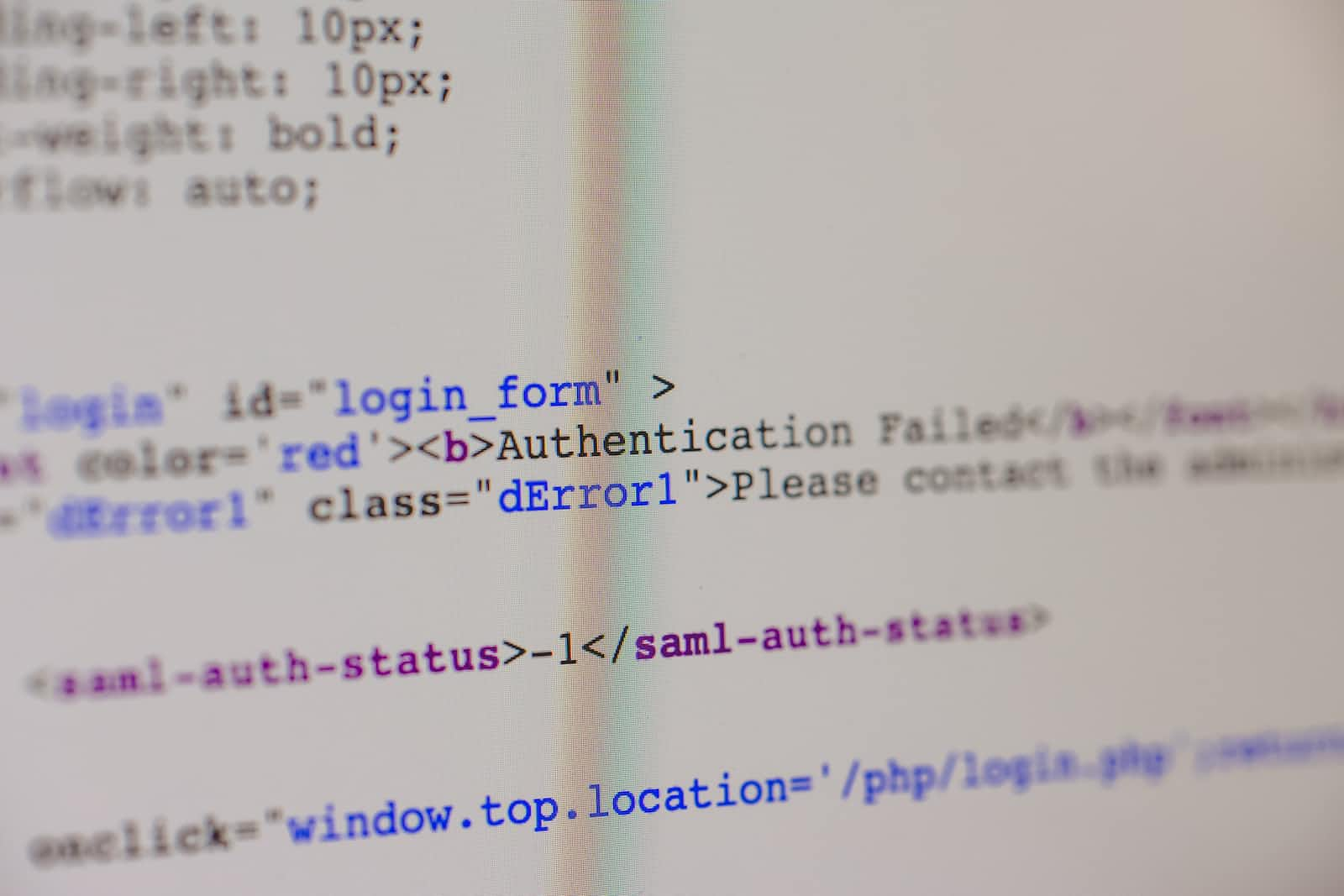Master the art of error handling in JavaScript with these top-notch practices and techniques:
 Vaibhav Tiwari
Vaibhav Tiwari
In software development, error handling is a critical part of ensuring that your program runs smoothly and that users have a positive experience. When it comes to JavaScript, error handling can be a bit more complicated due to the dynamic nature of the language. However, there are several best practices you can follow to make sure your JavaScript code handles errors effectively.
Understand the Types of Errors
Before you can effectively handle errors in your JavaScript code, it's essential to understand the types of errors that can occur. The three primary types of errors are syntax errors, runtime errors, and logical errors.
Syntax errors occur when the code you've written violates the syntax rules of the language. For example, if you forget to close a parenthesis or a quote, you'll get a syntax error.
Runtime errors occur when your code attempts to do something that's not possible. For example, if you try to divide by zero or access an undefined variable, you'll get a runtime error.
Logical errors occur when your code runs without errors, but the result is not what you intended. For example, if you write a function that's supposed to add two numbers but instead multiplies them, you'll have a logical error.
Use Try-Catch Blocks
One of the most effective ways to handle errors in JavaScript is to use try-catch blocks. A try-catch block allows you to catch errors that occur in your code and handle them in a way that prevents your program from crashing.
Here's an example:
vbnetCopy codetry {
// some code that might throw an error
} catch (error) {
// handle the error
}
In this example, the try block contains the code that might throw an error. If an error occurs, the catch block will catch it and allow you to handle it. You can use the error object to access information about the error, such as the message and stack trace.
Use Error Objects
JavaScript has several built-in error objects that you can use to create custom error messages. For example, you can use the Error object to create a generic error message, or you can use more specific error objects like TypeError or ReferenceError to create more informative messages.
Here's an example:
javascriptCopy codetry {
// some code that might throw a TypeError
} catch (error) {
if (error instanceof TypeError) {
console.error('TypeError: ' + error.message);
} else {
console.error('An error occurred: ' + error.message);
}
}
In this example, we're catching a TypeError and checking if the error object is an instance of TypeError. If it is, we're logging a more specific error message that includes the error message from the error object.
Use Assertions
Assertions are a powerful tool for catching errors during development. An assertion is a statement that you write to check that a specific condition is true. If the condition is false, an error will be thrown.
Here's an example:
javascriptCopy codefunction divide(a, b) {
console.assert(b !== 0, 'Cannot divide by zero');
return a / b;
}
In this example, we're using an assertion to check that b is not zero before dividing a it by b. If b is zero, an error will be thrown with the message "Cannot divide by zero".
Handle Errors Asynchronously
When you're working with asynchronous code in JavaScript, it's important to handle errors differently. Since asynchronous code runs outside of the normal program flow, you can't use try-catch blocks to catch errors.
Instead, you'll need to use callback functions or promises to handle errors asynchronously-
Here are the types of error handling asynchronously -
Handling errors asynchronously is a crucial part of writing robust JavaScript code. When dealing with asynchronous code, errors can occur at any time, and traditional error-handling techniques like try-catch blocks may not be sufficient. In this article, we will explore some techniques for handling errors asynchronously in JavaScript.
Callbacks
Callbacks are a common way of handling asynchronous code in JavaScript. A callback function is a function that is passed as an argument to another function and is called once the asynchronous operation is complete.
Here's an example of using a callback to handle errors in asynchronous code:
javascriptCopy codefunction fetchData(url, callback) {
const xhr = new XMLHttpRequest();
xhr.open('GET', url);
xhr.onload = function() {
if (xhr.status === 200) {
callback(null, xhr.responseText);
} else {
callback(new Error('Failed to fetch data'));
}
};
xhr.onerror = function() {
callback(new Error('Failed to fetch data'));
};
xhr.send();
}
fetchData('https://example.com/data', function(error, data) {
if (error) {
console.error(error);
} else {
console.log(data);
}
});
In this example, fetchData is a function that fetches data from a URL using an XMLHttpRequest. The function takes a callback function as an argument, which is called when the operation is complete. If an error occurs, the callback function is called with an error object as the first argument.
Promises
Promises are a newer and more powerful way of handling asynchronous code in JavaScript. A Promise is an object that represents the eventual completion (or failure) of an asynchronous operation and allows you to chain operations together.
Here's an example of using a Promise to handle errors in asynchronous code:
javascriptCopy codefunction fetchData(url) {
return new Promise(function(resolve, reject) {
const xhr = new XMLHttpRequest();
xhr.open('GET', url);
xhr.onload = function() {
if (xhr.status === 200) {
resolve(xhr.responseText);
} else {
reject(new Error('Failed to fetch data'));
}
};
xhr.onerror = function() {
reject(new Error('Failed to fetch data'));
};
xhr.send();
});
}
fetchData('https://example.com/data')
.then(function(data) {
console.log(data);
})
.catch(function(error) {
console.error(error);
});
In this example, fetchData returns a Promise object that represents the completion of the asynchronous operation. If the operation is successful, the Promise is resolved with the data as the argument. If an error occurs, the Promise is rejected with an error object as the argument. The .then() the method is used to handle the successful completion of the Promise, and the .catch() the method is used to handle any errors that occur.
Async/await
Async/await is a newer and more concise way of handling asynchronous code in JavaScript. Async functions return a Promise that resolves to the value returned by the function or rejects with the value thrown by the function.
Here's an example of using async/await to handle errors in asynchronous code:
vbnetCopy codeasync function fetchData(url) {
const response = await fetch(url);
if (response.ok) {
return await response.text();
} else {
throw new Error('Failed to fetch data');
}
}
try {
const data = await fetchData('https://example.com/data');
console.log(data);
} catch (error) {
console.error(error);
}
In this example, fetchData is an async function that uses the fetch API to fetch data from a URL. If the response is successful, the data.
Happy Learning
Subscribe to my newsletter
Read articles from Vaibhav Tiwari directly inside your inbox. Subscribe to the newsletter, and don't miss out.
Written by

Vaibhav Tiwari
Vaibhav Tiwari
Innovative Front-End Developer | Wordsmith | Freelance Enthusiast Passionate about crafting seamless user experiences and captivating content, I am a dedicated front-end developer, technical wordsmith, and avid freelancer. With a keen eye for detail and a drive for excellence, I bring a creative flair to every project I undertake. Skills: 🚀 Front-End Development: HTML, CSS, JavaScript, Tailwind CSS, React js. ✍️ Technical Content Writing: Engaging, SEO-Optimized, Informative 💼 Freelancing: Adaptable, Efficient, Results-Driven Let's Collaborate: Ready to take your projects to new heights? Let's connect. I'm excited to discuss how I can contribute to your team's success. Vaibhav Tiwari